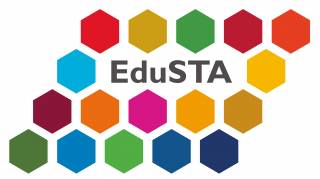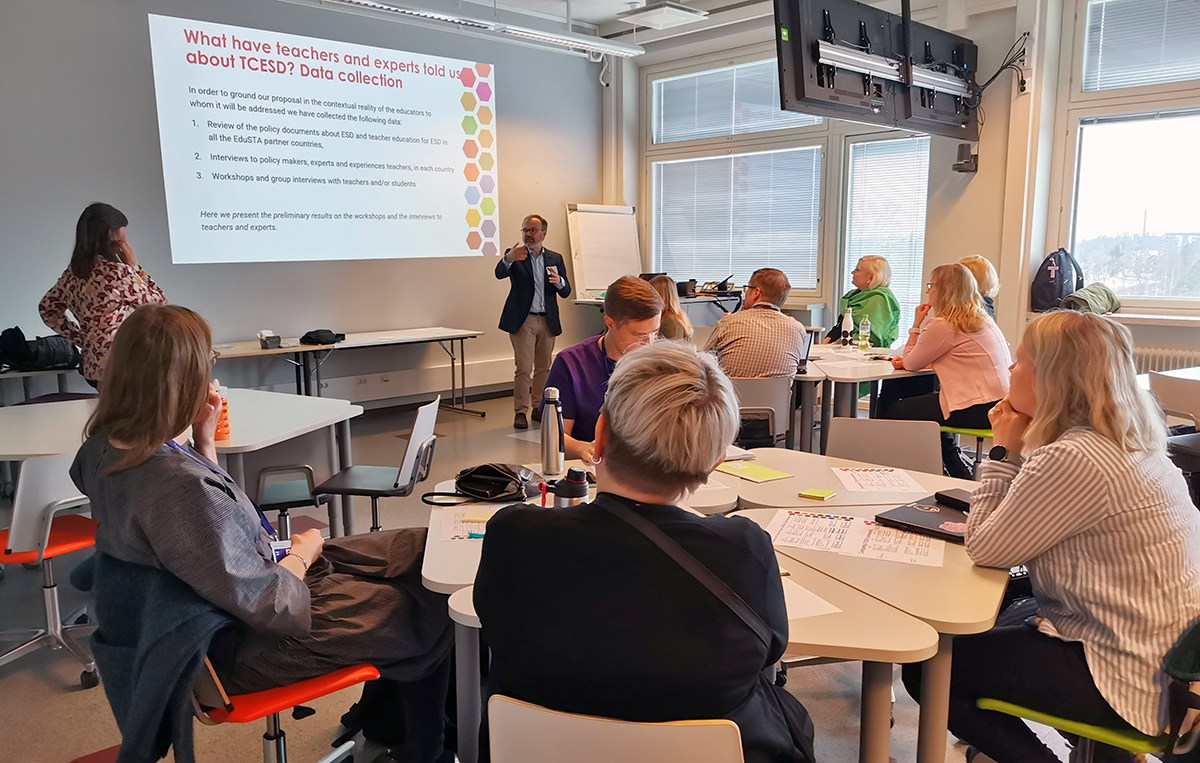Jaume Ametller, Associated Professor from the University of Girona, presents the early findings on competences that teachers should have for ESD. Advice is taken from the learning community to get what is already there and to get it operational.
“We have listened to what teachers and experts have to say about ESD competences. Both the literature review and the responses from teachers and experts help us to co-create operationalised teachers’ ESD (TCESD) competences”, Ametller says.
What would an ideal ESD teacher be like?
When asked to describe an ideal ESD teacher, a number of elements were mentioned, such as being able to lead the school community, and to be an example of ESD maker in the school. The ideal ESD teacher can work in teams in a collaborative and assertive way, both in school and with other agents of the school’s environment community. She or he is passionate, willing to take part in ESD, and open to innovation, able to take into account diversity and equity questions, and to propose teaching and learning activities where students are the protagonists.
When asked about how teachers see ESD in their practice, some of them consider that ESD is not part of their work. Many teachers address ESD in their teaching as an add-on to their usual praxis, and often associated with isolated projects. At the same time, many teachers are involved in ESD projects. The situation of teacher education and professional development on ESD varies from country to country.
“Lack of necessary professional development has different reasons, including lack of specific resources and not being a policy priority. There’s also frustration connected with the lack of coherences of ESD implementation”, says Ametller.
Most teachers would like to have more training in knowledge as they feel they do not know enough about ESD. When asked about how the training on ESD should be, teachers mentioned the need to align it with policy, and, particularly, with the curriculum. Many teachers also mentioned that they would like to know what is happening in other schools; discussion and benchmarking would be highly appreciated.
How can we help with the challenges related to demonstrating competences?
Principal Lecturer Sanna Ruhalahti from Tampere University of Applied Sciences explains how ESD competences could be more visible to others. The answer is competence-based digital open badge constellation.
“Digital badging is a form of competence-based assessment that offers recognition of formal, informal, and experiential learning. The badge criteria explain the competence by learning objectives, assessment criteria, as well as instructions for competence or skills demonstration”, she describes.
Detailed badge assessment criteria help applicants demonstrate their skills and competences. Criteria help applicants conduct a self-assessment of their own performance. Ruhalahti says that this works well for recognizing prior skills and knowledge.
“We hope that this clear criterion helps all teachers to do self-reflection and demonstrate their competence. If you are already competent in certain competence, you can directly show it, apply a badge, and get recognition”.
Text: Hanna Ylli
Photo: Liisa Marttila


